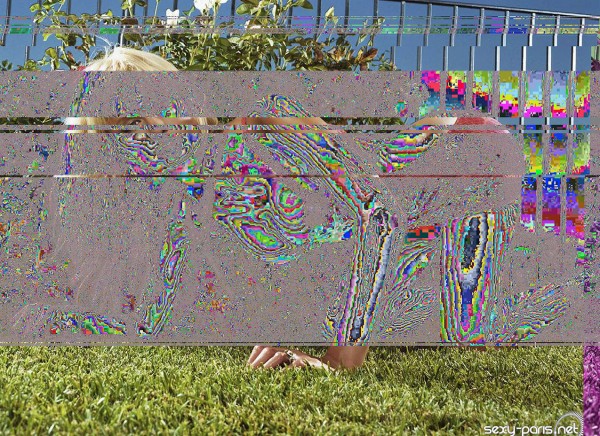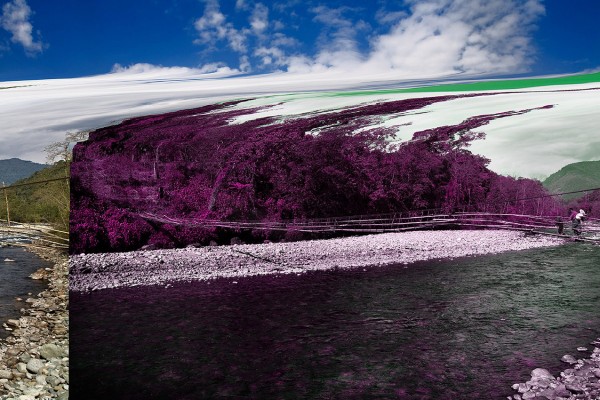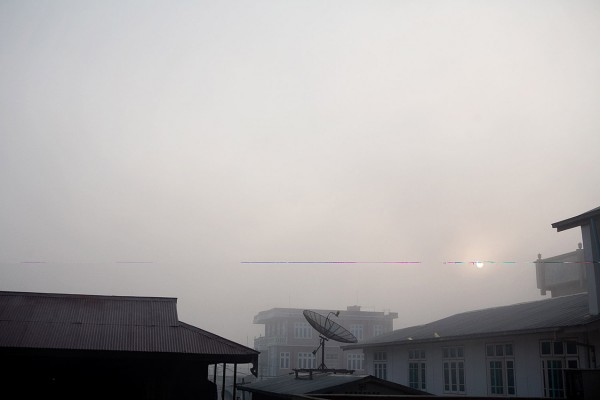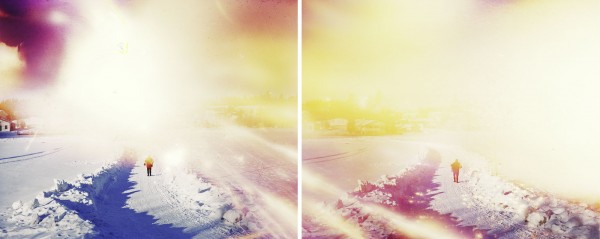“I’m interested in the idea of visual “noise” or disruption in your images and was wondering if you could talk a little bit about the role that this noise plays when making an image.
I think that it is important to shed first some light over the technique or method, which is used when creating these images. Images are modified by alteration of digital image file’s source code: inserting or removing data. For example Paris Hilton (Dog Chromosome X, Poodle) has dog’s genetic data and Broken Idyll (Bridge) has phrases from the Burmese propaganda newspaper New Light Of Myanmar inserted to the image file. Image is taken in the Burmese Himalayas. With the picture Removing White, I literally removed all parts of code re-presenting white. Image originally depicted a tank from the World War II.
In a way I destroy the image, but on the other hand, I attempt to create something aesthetically surprising and interesting.
The noise also has the function of distorting or obscuring parts of the original image. For you, how do you choose the images and what choices to you make in altering an image?
I try to choose images which, after manipulation results particular connotation, political or otherwise. Whether I use a image from the web or choose to photograph it by my self, the aesthetics naturally affect also a lot during the process.
The results after insertion of scientific or political data might appear as random, mistakes or destructive to the original re-presentation. But are in fact results of analyzing the image file and careful consideration where to insert the data. There is also some trial and error involved, especially when I first started making these images. Nowadays I have gained quite a lot of control over the effects.
The distorted images also push the photos toward abstraction, and I was wondering if you could talk more broadly about the role of abstraction in your work.
It seems to me that abstraction in photograph is fundamentally different comparing to that of painting. Photograph, as an abstraction may actually be impossibility, since it always tied to its origins in the real world.
I don’t consider these images as abstractions, but rather as information re-ordered in a way, which isn’t quite understandable through conventional methods of reading an image. For me the abstract-looking areas symbolize the visual noise and the identity vacuum of the contemporary society. Images also act as metaphors to the religion like faith in science and technology; Belief of creating something beautiful and good, even if it might not always be the case.” – interview via i heart photograph.




